Pye P114BQ portable attaché case radio from 1952
This article looks at a device that was the height of fashion with teenagers in the early to mid 1950s when it was made, the Pye P114BQ battery valve, portable radio.
My Pye P114BQ radio set
I bought my copy of the Pye P114BQ from eBay recently when I decided I would like to revisit my youth and have a play around with some electronics.
Background
I spent a lot of my teenage years fiddling around with radios and, more commonly TV sets, which I used to buy from a local TV and Radio dealer called Dugdales in Fakenham, the town in Norfolk where I was born.
My father was very interested in radio, having built radio sets when he was a teenager in the early 1940s and then been a radio engineer in the RAF when he did his national service in the late 1940s. That interest then rubbed off on me when I was growing up and because my Dad was friendly with one of the engineers in Dugdales, I got to know the staff there quite well when I visited the shop with him.
In those days, when the shop sold a new TV or Radio it was quite common to take the customer’s old equipment in part exchange, so they often had a store room full of used equipment that they would let me purchase for a few pounds.
I don’t know how my family used to cope with me lugging home TV’s and Radio sets to play around with, but somehow they let me, and I learnt a lot of electronics by reading the circuits and fixing the different models I acquired. Eventually, that interest led to me pursuing a career in electronics when I joined Marconi Instruments in 1978.
Now, about 45 years later, and not having been involved in electronics for about 20 years, I’ve decided to retire from work in a few weeks time, and I’m thinking of how I’d like to spend my time. I’ve always been interested in vintage items so as well as vintage cameras and projectors, I’ve decided that one of my retirement hobbies will be the refurbishment and collection of vintage radio sets.
Since there seems to be a revival in all things ‘mid-century’, I’m hoping that I can make this self-financing by selling the majority of the sets I refurbish and only keep really interesting models1 .
My Pye P114BQ valve radio
So, back to the Pye battery valve radio.
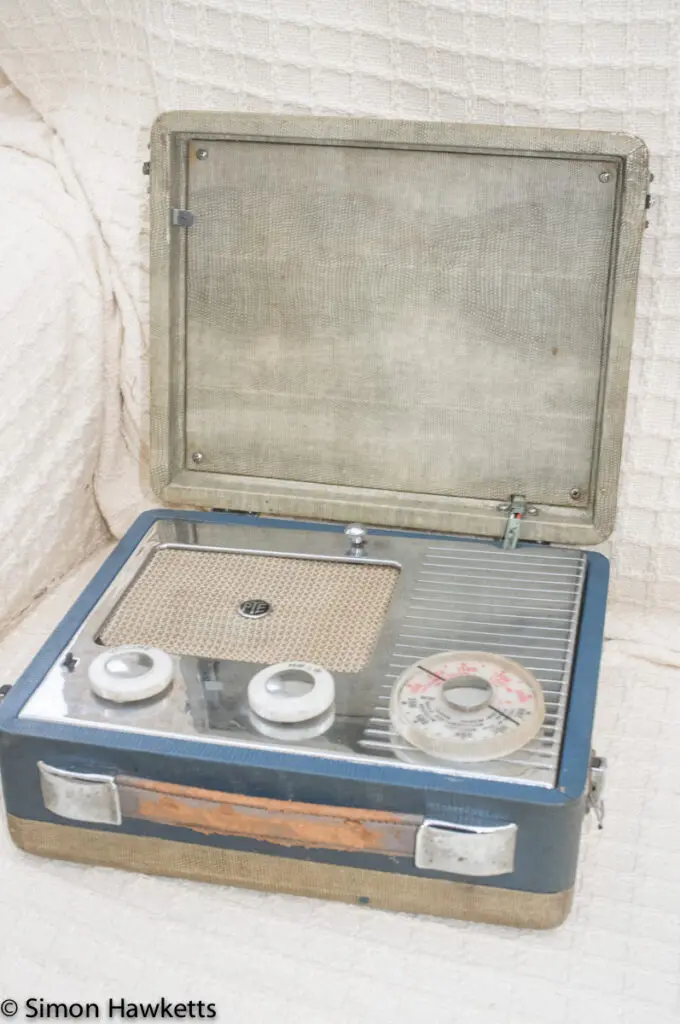
I found the set on eBay when I was looking for some initial models to start with and paid only a few pounds for it because the seller couldn’t guarantee that it was working. I suspect that is probably the case with many battery valve radios, because the 90 volt batteries that were used for the HT supply haven’t been available to buy for probably 40 years.
The set looks in pretty good shape other than requiring a good clean, although the carrying handle is very worn. I’m fairly sure that it will clean up well because I tried a small patch on the top of the case with a cotton bud and saliva (learnt that from watching ‘The Repair Shop’) which cleaned up fairly well as you can see in the pictures below.
The internals also look in good condition with all the valves in place and the PCB doesn’t seem to have any broken components.
I haven’t yet tried to power it up (no battery as yet2 ) so I don’t at the moment know what I’ll need to do to get it working. Once I carry out that work, I will add another article which deals with the fixes and refurbishments that I do.
Photos of the Pye battery valve set
Here are some photos of the radio. As you can see it’s in reasonably good condition but pretty dirty.
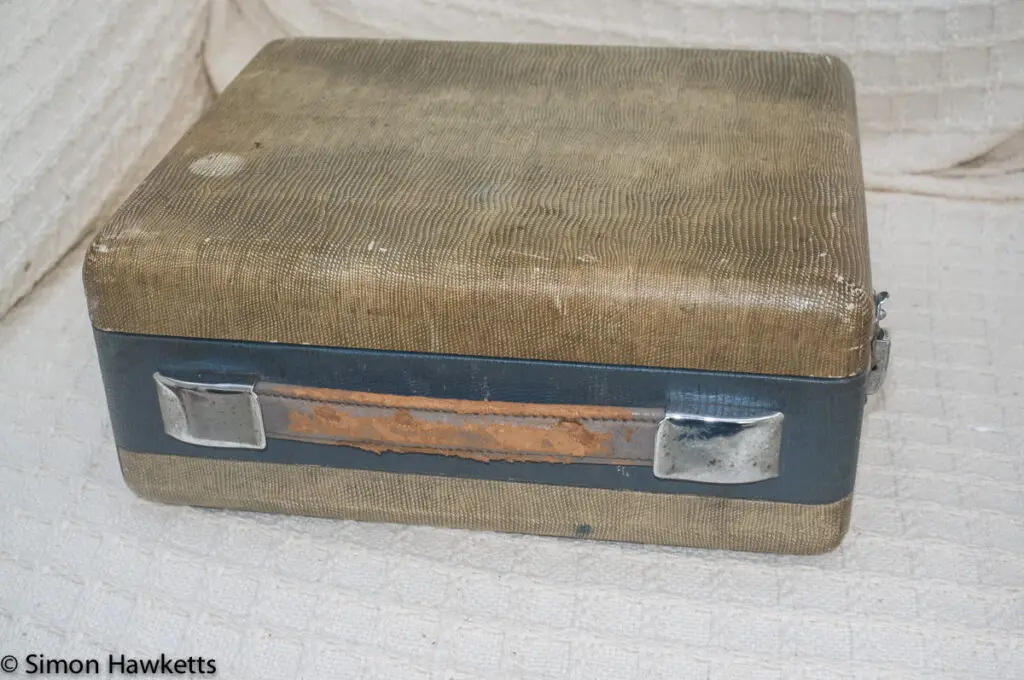
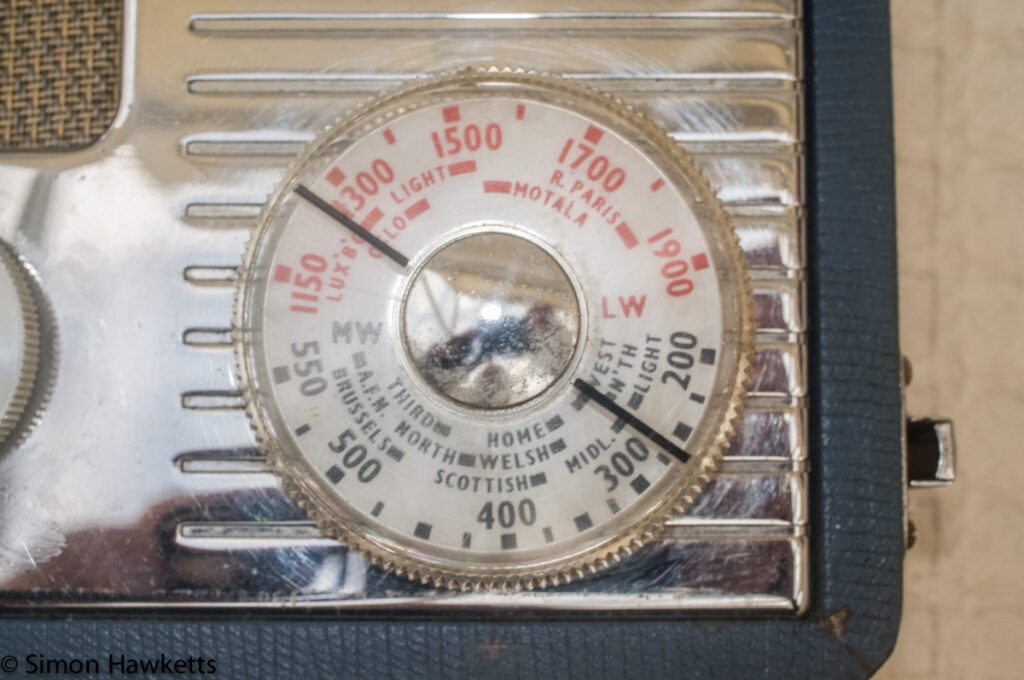
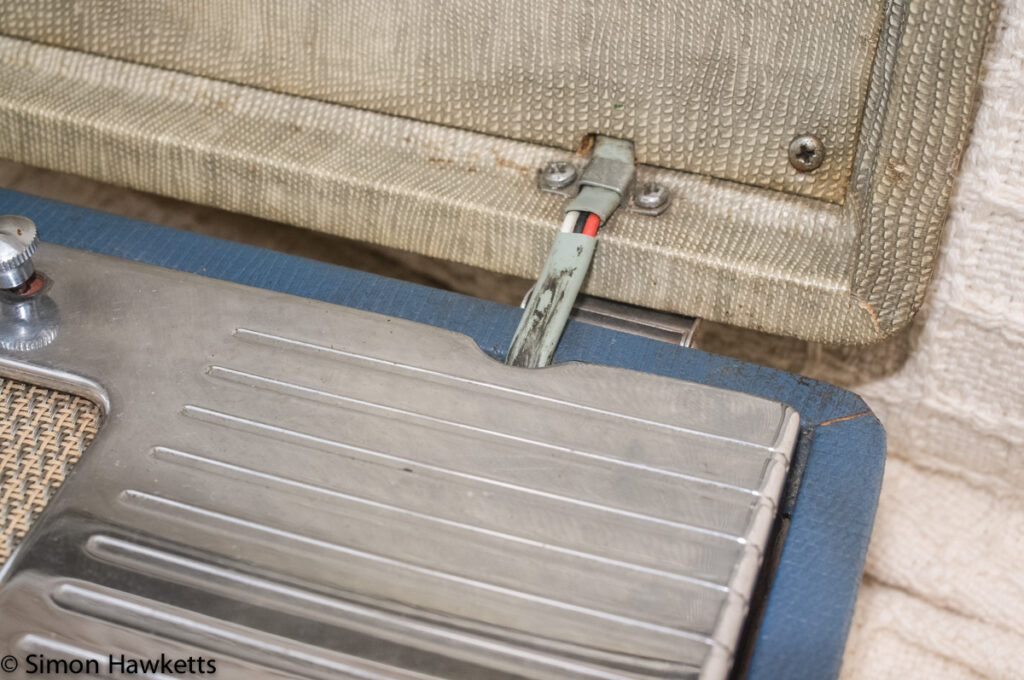
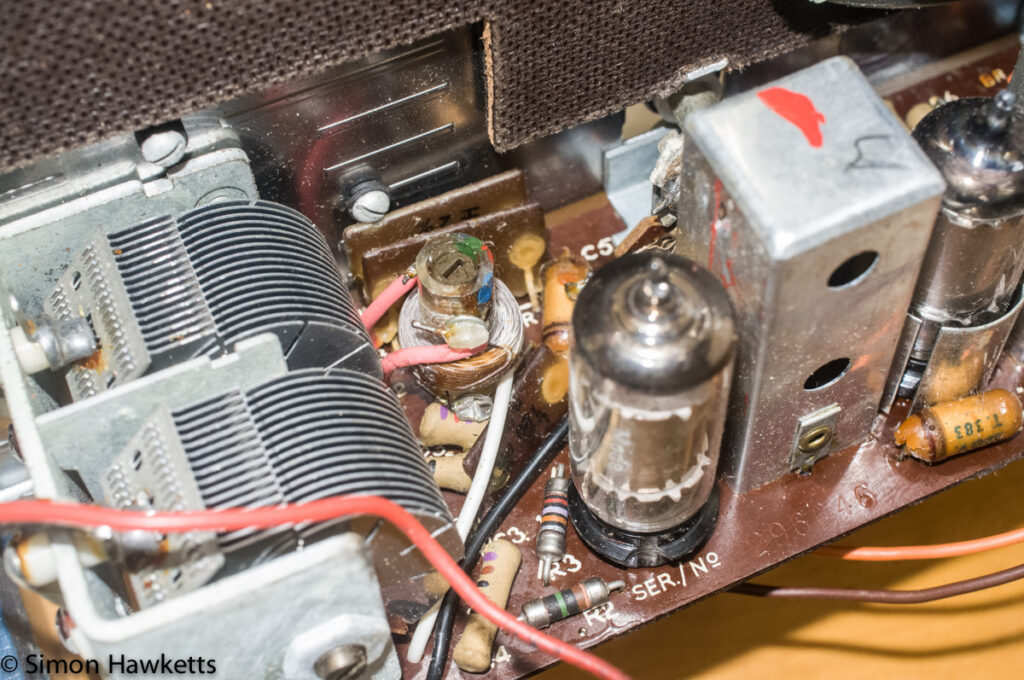
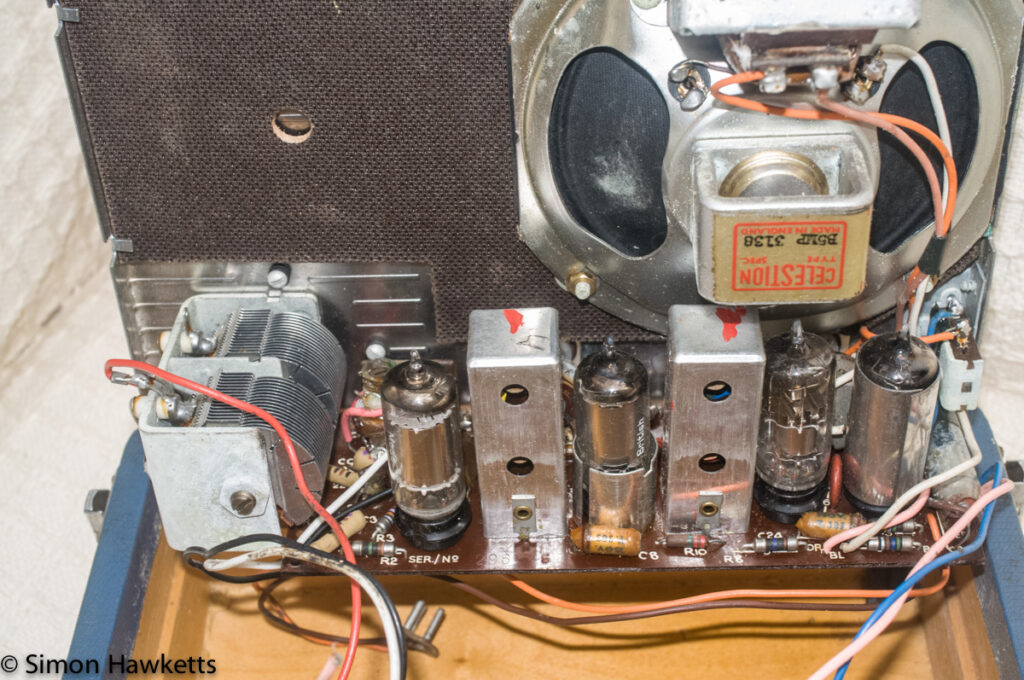
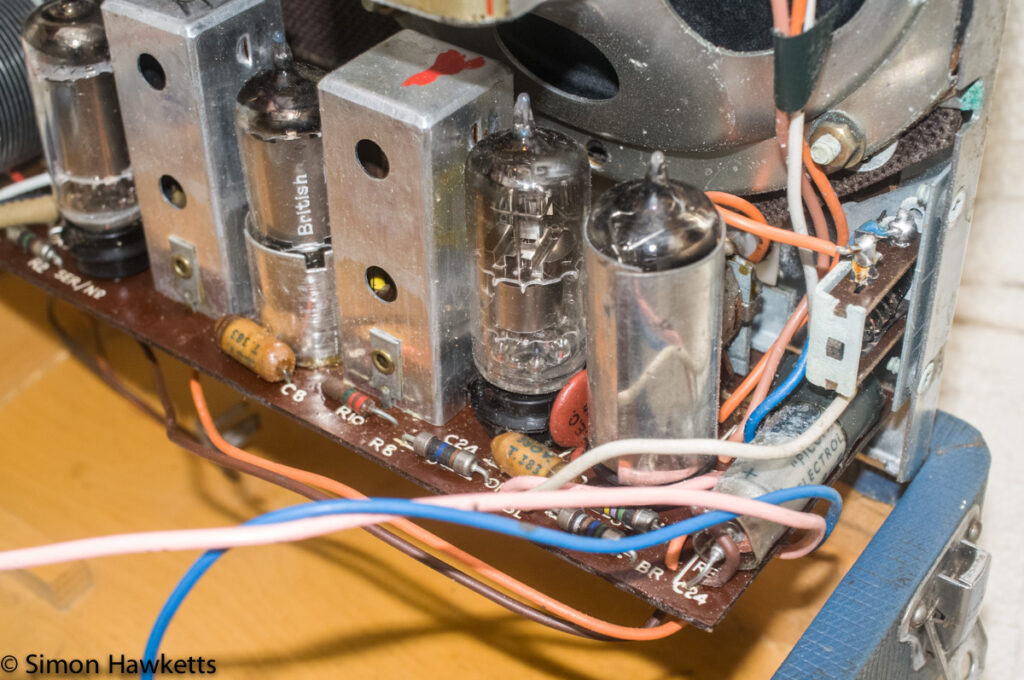
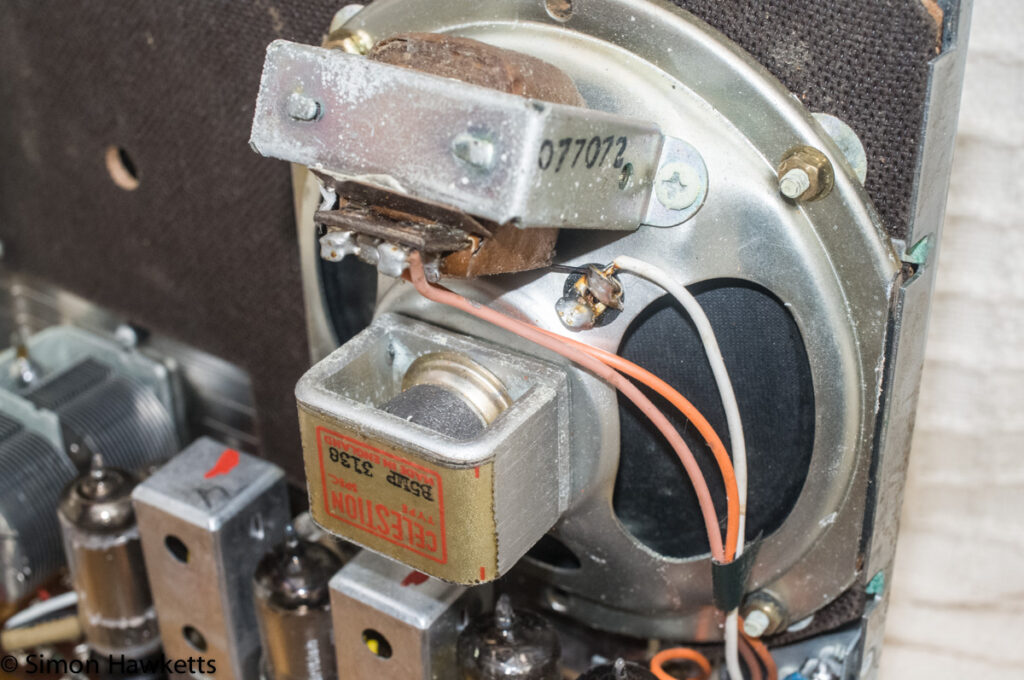
Pye battery valve radio description.
The Pye radio set is an attaché case (sometimes called a Jewel case) model which is about 9 1/2 inches by 8 inches in size and about 4 inches deep. This was a very common style of battery radio in the early to mid 1950s and many manufacturers made models that looked very similar.
The main reason the radio was made was to be taken with you when you went on days out or family holidays. This was quite a novelty, because although radio had been around in people’s homes since the 1920s (or the 1930s for the majority of less wealthy people), other than devices like crystal sets that required no power, for most people a wireless set was a device made for the home and required a mains power supply.
In the 1950s however a range of valves were made that only required low current to run the heaters and could work with quite a low voltage as the HT (high tension) supply. This made it possible to run them on batteries and a whole new range of battery receivers was born, of which the Pye P114BQ was one of the early models.
The colour of my radio is a two-tone cream and blue, but the model was made in many different styles; I’ve seen versions with red and green fabric used in place of the blue of my model on eBay, so I guess when originally made you could purchase the colour that best went with your car or picnic set!
The set has an internal aerial which consists of several turns of a large wound loop of wire which is fitted inside the case lid behind the lid’s inner panel. You can see the cable that brings the aerial signal into the radio in the accompanying photos.
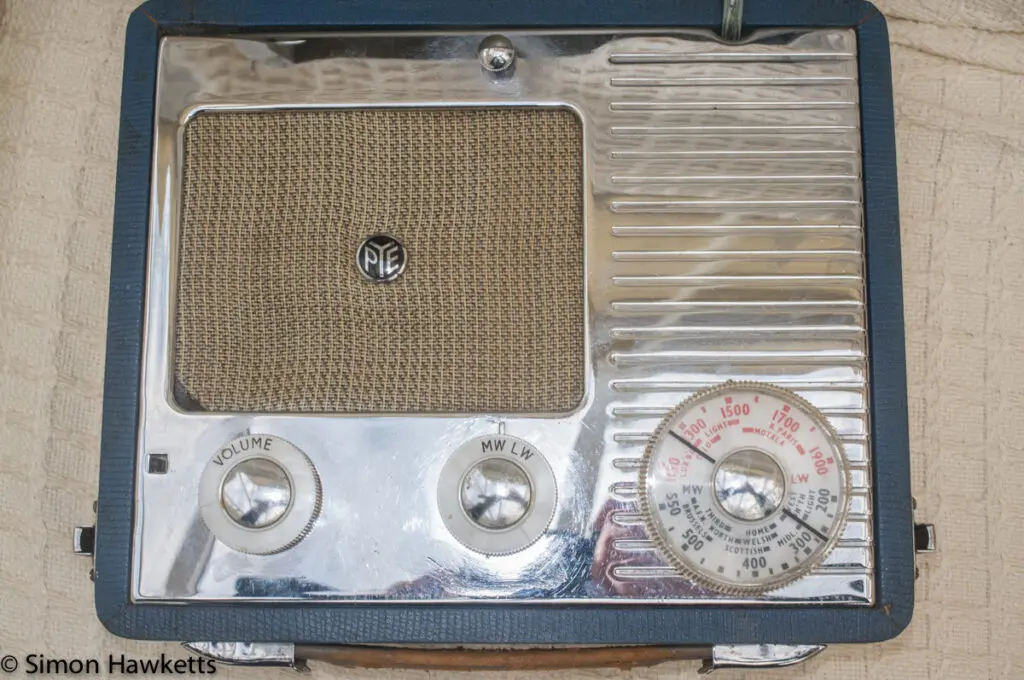
The controls are very simple.
When the lid is opened there is a chrome plate with a set of controls at the bottom of the set. These consist of a tuning knob on the right-hand side, a waveband switch in the middle and a volume control on the left. Above the controls is a square aperture which the speaker sits behind, and right at the top of the chrome panel is a thumb screw which allows the panel to be lifted and the batteries changed.
There is no On/Off switch mentioned in those controls, and that’s because that is a small switch which is activated when the lid opens. Although I haven’t got the set running yet, I’ve seen a video of a smilar set running on YouTube, and it seems to start up almost instantly – I’ll be interested to see it that is actually the case when I get this radio working because valve radios need to have the heaters up to temperature to work and that normally takes a few seconds (I remember having to wait for the valve television set to ‘warm up’ before it would work).
The electronic design of the radio is a standard superhet – the same basic design that is used in all radios including the one you buy today – at least for Medium Wave and Long Wave (analogue) radio sets. In this Pye set this design is realized with 4 valves, which was a pretty standard design for all battery valve radios and in fact most of them used the same set of four valves.
Although this style of radio was popular in the early to mid 1950s, the introduction of the transistor in the late 1950s made them quite a short-lived design. The transistor was cheaper to make and only required one low voltage battery and so rapidly replaced the battery valve radio set once models were available.
Pye battery valve radio Specifications
- Pye P114BQ 2 band, battery valve radio
- Made in about 1952 by Pye of Cambridge.
- 4 valve design
- Portable, attaché case style
- Powered by one 1.5v LT battery and one 90v HT battery
- Internal Loop aerial in the lid
- Power switch activated by the lid
- Covers Medium wave 200 Metres to 550 Metres and Long wave 1150 Meters to 1900 Meters
- Serial Number 296646
For anyone interested, the other radios in my small collection are listed here.
- I would need to do this from a purely practical, storage point of view. I have a log cabin in the garden that will be the base for my hobbies, and there are only so many cameras, projectors and radio sets you can get in and still have room to work! [↩]
- I’ve purchased a number of PP3 9v batteries which I’ll join in series to use as the HT battery and the LT supply can be run with a D cell [↩]
Discover more from Everything Vintage
Subscribe to get the latest posts sent to your email.

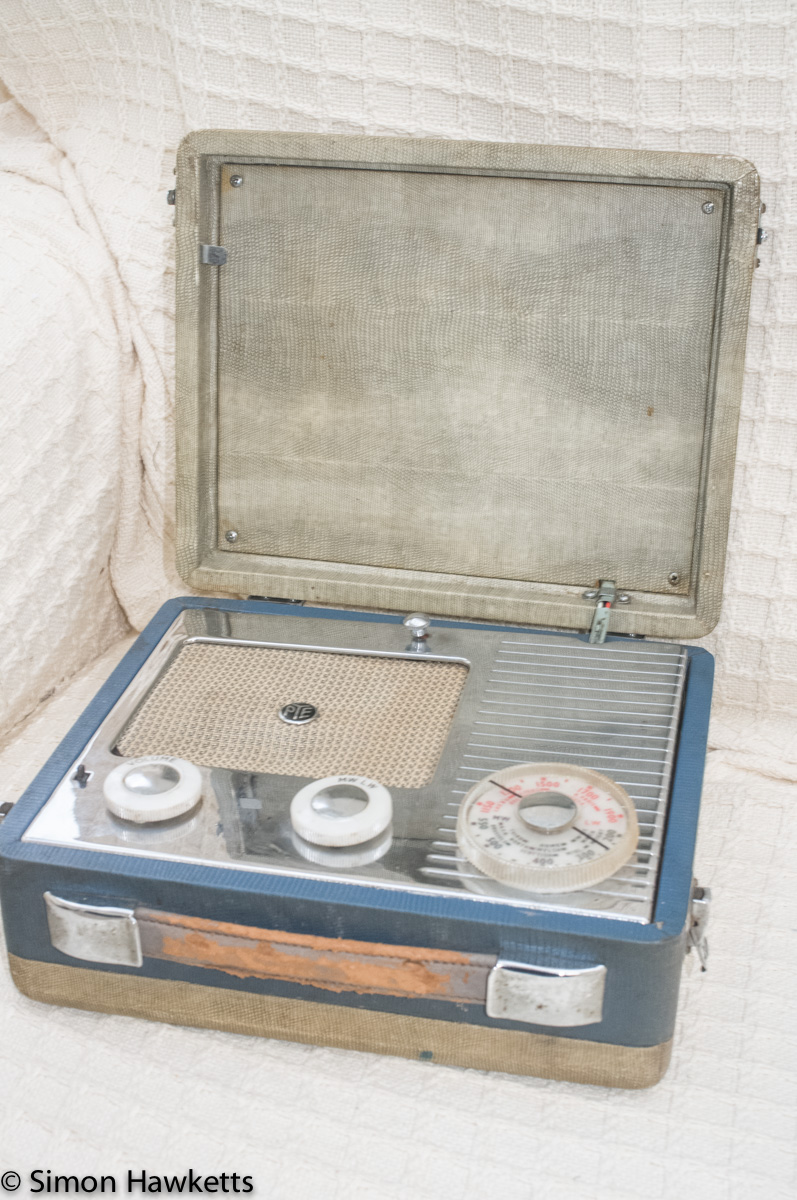
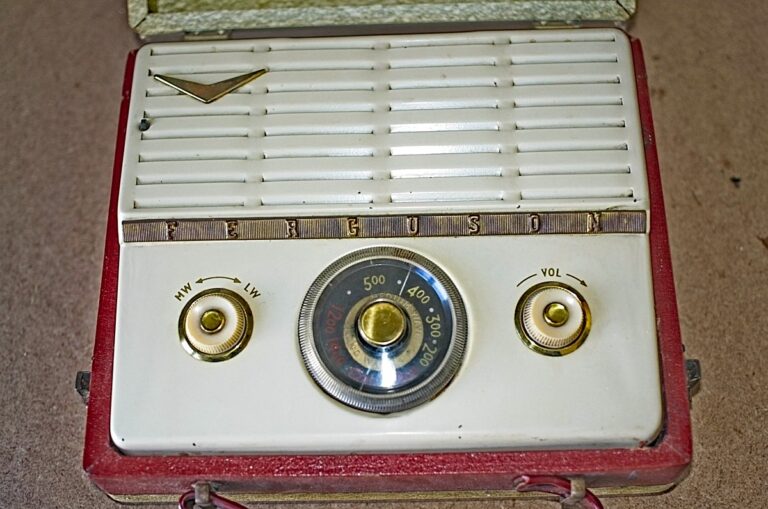
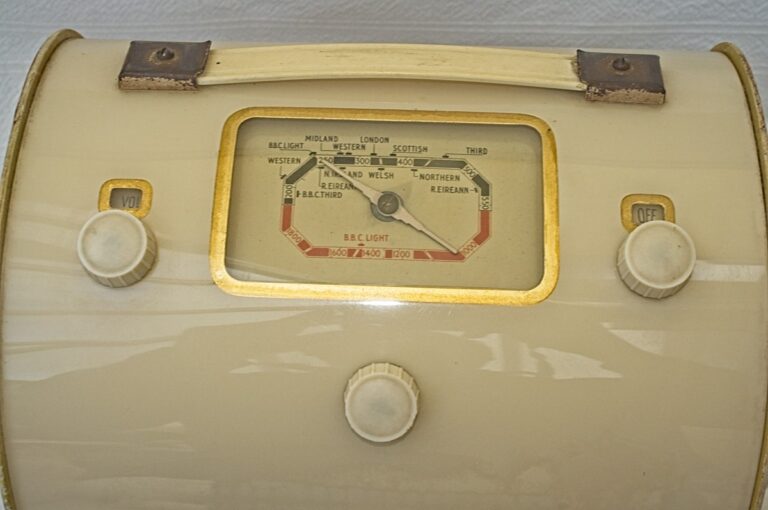
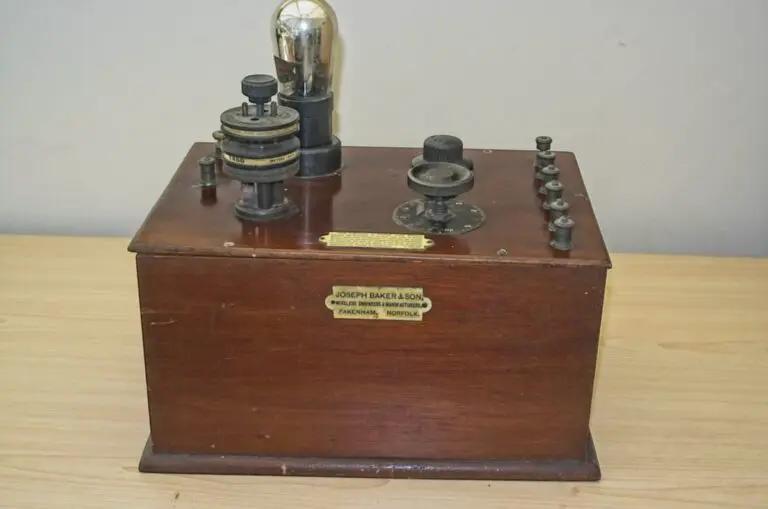
Dear Simon,
Have you managed to get this set going since you published the article?
I have been renovating a Vidor Attache Case Radio CN414 (https://www.radiomuseum.org/r/vidor_attache_cn414cn_41.html)
As with all older radios I immediately replace all the electrolytic capacitors.
A 90v supply can be made by putting 10 PP9 batteries in series.
The 1.5v can be supplied by a single ‘C’ or’D’ cell.
When set up correctly they do start working almost immediately (if the LT supply battery is in good shape!)
The biggest issue is the lid switch – if it is not working it can be replaced with a micro switch.
Thanks for the inspiration your web site provides (I am also a keen photographer – just got my hands on a Mamiya RB67 which I enjoy using)
Regards
Mike
Hi Mike – I haven’t yet, but I’m obviously thinking along the same lines as you because I have purchased 10 PP9 batteries and some D cell holders for the LT supply! Although I haven’t yet written an article about it I also picked up an Ever Ready type C set a few weeks ago which is a very attractive set – when it’s going I may have that set up in my Log Cabin to keep me entertained.
I had one just like this in childhood and I used to find its operation fascinating and also the strange batteries that it used, which I see are at most only fitfully available nowadays. Thanks to Mike for that advice on a work-around replacement for the original batteries. I hope that that solution works for the Ever Ready set of which you speak, Simon.
I note that its speaker is a Celestion, which puts me in mind of the 9″/23 cm-diameter Celestion speaker I have had since childhood and still play records through it today. I tried leaving some feedback on a site dedicated to the Celestion brand – celebrating its centenary this year – to help me date the speaker, since the date code has been rusted over and I can’t clearly read it, but I’m not sure that the comment went through. I wish I knew the technical name for that sort of angular back-brace surrounding the magnet that was current in the style of speakers in the early 1950s. Presumably there is one!
Looking forward to any feedback you may have.